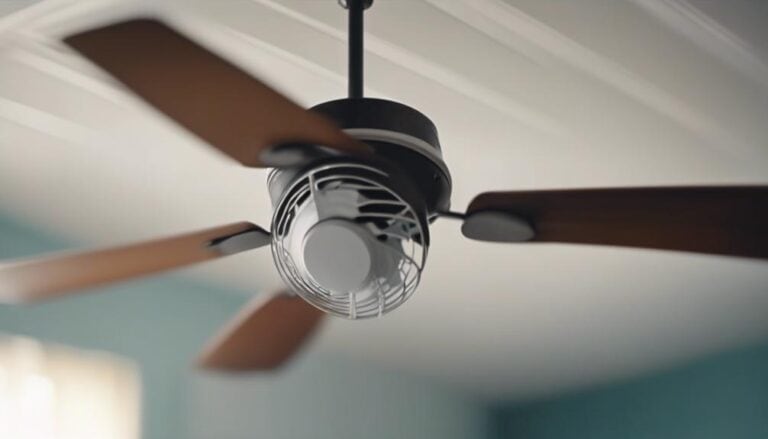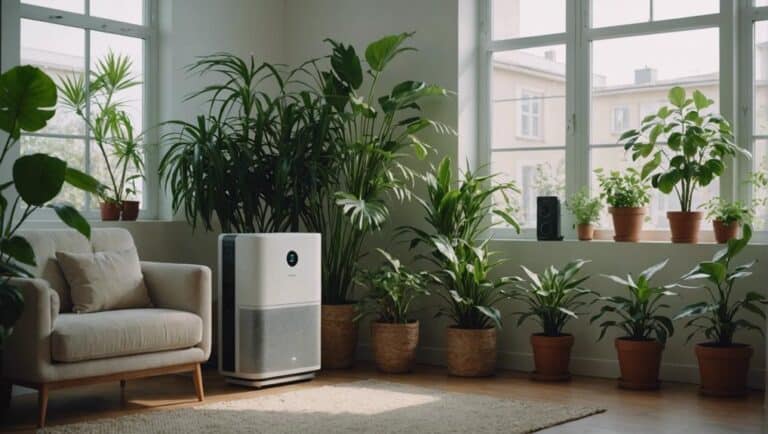How to Position Fans to Cool a Room: Effective Airflow Strategies
In the sweltering heat of summer, finding cost-effective ways to cool our homes is a priority. We often rely on electric fans as a first line of defense against discomfort. Yet, simply placing a fan in a room isn’t enough to maximize its cooling potential. To ensure our living spaces are as comfortable as possible, understanding the strategic positioning of fans is crucial. It’s not just about the type of fan we use, but also how we direct air movement efficiently.

We can enhance the feeling of coolness and air circulation in a room by exploiting natural airflow and the specific functions of different fan types. Whether it’s creating cross ventilation to flush out hot air or using ceiling fans to facilitate the downdraft during hot days, the right setup can make a significant difference. Beyond just bringing down the temperature, the way we position fans can also affect our energy consumption, leading to potential savings on our utility bills during high-use periods like the heat of summer.
Key Takeaways
- Strategic fan placement enhances room cooling and airflow.
- The right fan setup can contribute to energy efficiency.
- Effective fan use requires considering room layout and ventilation.
Understanding Airflow Dynamics
In tackling the task of cooling a room, we recognize two central factors: the physical laws governing airflow and the practical methods to enhance air circulation. Understanding these elements is crucial for optimizing the placement of fans in any space.
The Science of Cooling
When we discuss cooling a room, it’s essential to differentiate between the sensations of actual temperature reduction and the felt effect of a breeze. Airflow generated by fans doesn’t lower room temperature; instead, it creates a wind-chill effect. Moving air flows over the skin and enhances heat dissipation from the body, which makes us perceive the cool air as providing relief from warm air.
Air Circulation Principles
Effective air circulation involves more than random placement of fans. We aim to create a flow that moves the hot air away and allows cold air to take its place. To accomplish this, position fans so they push the warmer air out and pull the cooler air in. Ideally, this means placing a fan at a lower level to bring in cool air and another one higher up to exhaust the hot air upwards, as warm air naturally rises. Understanding how to capitalize on these air circulation principles can transform a stagnant, warm space into a refreshing environment.
Types of Fans and Their Functions

In our exploration of fans, it’s essential to understand that each type of fan serves a distinct purpose. The positioning and functionality of fans greatly impact their effectiveness in cooling a space.
Box Fans
Box fans are typically compact and portable units designed for floor or window use. They provide a concentrated flow of air and can effectively circulate air in small to medium-sized rooms.
Ceiling Fans
Ceiling fans are permanently mounted to the ceiling and offer widespread air distribution. They often feature reversible motor options to either push cool air down during warmer months or pull warm air up during colder seasons.
Tower Fans
Tower fans stand tall with a slender profile and offer a vertical flow of air. Their oscillation feature enables them to cover a wide area, and they often come with multiple speed settings and modes for customized airflow.
Pedestal Fans
Pedestal fans, or stand fans, consist of a large blade housing mounted on an adjustable stand. These fans are known for their powerful air output and the ability to direct airflow at varying heights.
Window Fans
Window fans are designed to fit snugly inside window frames, either drawing cool air from the outside or exhausting warm air from inside. They’re useful for creating cross-ventilation when strategically placed across from another window.
Wall-Mounted Fans
Wall-mounted fans are secured to the wall to save floor space and can pivot to direct airflow precisely where needed. These fans work well in rooms where floor and table space is limited.
Portable Fans
Portable fans encompass a range of fan types, including personal, desk, and floor fans. Their key feature is their ease of mobility, allowing us to reposition them as needed for targeted cooling.
Room Preparation and Setup

Before we begin positioning fans to efficiently cool a room, it’s crucial to prepare the space in a way that enhances ventilation and airflow. Ensuring good air circulation will lead to improved air quality and contribute to keeping humidity levels in check, especially in confined spaces.
Maximizing Ventilation
To maximize ventilation, we first assess the room size and identify the sources of natural airflow, such as windows and doors. Our goal is to create a pathway for fresh air to flow through the room. We then strategically position fans to push hot air out and pull cooler air in from outside, remembering this is most effective when the air outside is cooler than inside. In rooms with a single window, we can place a fan there to help draw in cool air or expel hot air, depending on the outdoor conditions.
Furniture Arrangement
The way we arrange our furniture can significantly affect air circulation. For optimal airflow, we arrange furnishings to create clear paths for air to move. This might involve moving larger pieces away from window areas or ensuring the fan isn’t blocked by furniture. We consider the impact each item will have on the space available for air to travel freely, thereby improving air quality and managing humidity. It’s important that fans are positioned to move air around the room without obstruction, allowing for an even distribution of cooler air.
Fan Placement Strategies
Understanding the principles of aerodynamics and thermodynamics allows us to employ fan placement strategies effectively to cool down a room. We can use these principles to manipulate airflow and maximize the cooling effect provided by fans.
Optimal Fan Positioning
To optimize fan performance, it’s vital to place fans where they can facilitate the natural flow of air. Positioning a fan near a window can help push hot air outside, especially when it’s cooler outside than inside. Conversely, when outdoor temperatures are higher, positioning the fan away from the window to circulate the indoor air can prevent bringing in hot air. Ceiling fans should be set to run counterclockwise during summer, as this creates a downdraft that produces a cooling effect.
Creating a Cross-Breeze
To effectively create a cross-breeze, position fans across from each other on opposite sides of a room. This allows one fan to draw in fresh, cooler air from outside while the other pushes the warm air out. Placing a fan in a window can facilitate this process, especially when outdoor temperatures drop in the evenings. If possible, open another window or door directly across to establish a clearer path for airflow.
Positioning for Targeted Cooling
For targeted cooling, we can direct a fan’s airflow towards the area where cooling is most needed. If you’re seated, angle a standing or table fan to blow air directly at you or slightly above you to cover more area. In bedroom settings, placing a fan on the floor and angling it upwards can cool the room effectively without the discomfort of a direct breeze while sleeping. Keep in mind that fans cool people, not rooms by creating a wind chill effect, so their placement should prioritize areas where people spend the most time.
Combining Fans with Air Conditioning
When we effectively combine fans with our air conditioning systems, we enhance cooling efficiency and potentially lower energy usage.
Synergy with AC Systems
Our aim is to create a comfortable environment by effectively circulating the cool air produced by the air conditioner. Positioning fans near AC vents can distribute cool air more evenly throughout the room, reducing hot spots and improving our overall comfort. The airflow from the fan can increase the indoor temperature uniformity, making us feel cooler without necessarily turning the AC to a lower temperature. By considering airflow directionality, we can ensure fans are positioned to work with the AC, not against it.
Cost-Efficient Use
Strategically positioning fans to assist the air conditioning can translate to a notable reduction in costs. By circulating the air, our AC units don’t have to work as hard, which could extend the life of the air conditioner and save money on repairs. Using fans allows us to set the AC thermostat higher, effectively decreasing the energy consumption of the AC unit. Properly aligning fans with the AC can provide a balance between comfort and cost-efficiency.
Advanced Cooling Techniques
To significantly enhance the cooling effect in your space during sweltering days, we can implement advanced methods that go beyond the basic fan setup.
Using Evaporation for Cooling
We know that evaporation requires heat energy, which is taken away from the air, resulting in a cooling effect. By strategically placing a bowl of ice in front of the fan, we cause the fan to blow cooler air around the room as it passes over the ice and causes it to evaporate. This method is particularly effective in dry climates where the added moisture is also a welcome relief.
Heatwave Strategies
During a heatwave, our regular cooling tricks need to be amped up. To manage the extreme temperatures, we should ensure we create a cross breeze that pulls cooler air through the space. This can involve opening select windows and positioning fans to push the hot air out while drawing in the cooler evening air. By doing this, we effectively keep cool, cycling out the hot air more quickly and efficiently.
Maintenance and Safety Tips
To ensure our fans function optimally and safely, detailed attention to maintenance and cleaning, alongside following safe operation practices, is crucial. Let’s dig into the specifics of keeping our fans in top condition for better cooling and prolonged life.
Proper Fan Cleaning
When we talk about the care of our fans, the primary step is proper fan cleaning. A build-up of dust can impede airflow and diminish cooling efficiency. First, ensure the fan is unplugged. We should then disassemble the front grill, wipe the blades and rear grill with a damp cloth, and use a soft brush or compressed air to remove dust from the motor housing. For pedestal fans, it’s important to regularly check and, if needed, adjust the tightness of the base to prevent tipping.
Safe Operation Practices
Safe operation practices are paramount for our protection and the fan’s longevity. Always place the fan on a stable, flat surface to avoid any risk of it falling during use. Allow the fan to rest if it has been in use for extended periods; this prevents overheating. Additionally, we should keep the fan out of reach of children and ensure no objects obstruct the airflow or sit near the blades while in operation. Regularly inspect the cord and plug for any sign of wear or damage, replacing the fan if necessary to avoid electrical hazards.
Energy Considerations and Savings
When we talk about cooling our spaces, it’s vital to think about the different ways we can reduce energy consumption and, consequently, our utility bills. By positioning fans strategically and understanding their effects on energy use, we can make smarter choices that have a positive impact on both our wallets and the environment.
Reducing Energy Bills
Using fans for cooling can be a cost-effective alternative to relying solely on air conditioning. According to the U.S. Department of Energy, fans use less energy than air conditioners, leading to savings on electricity costs. For example, ceiling fans set to run counterclockwise in the summer can make rooms feel cooler without lowering the thermostat.
- Optimal fan placement: Positioning fans to directly blow air onto occupants increases evaporative cooling, as suggested by the National Renewable Energy Laboratory.
- Fan size and room area: A 36- to 44-inch diameter fan cools rooms up to 225 square feet efficiently, while larger rooms typically require fans that are 52 inches or greater.
By using the appropriate fan size and positioning them effectively, we can enhance their cooling effect and reduce the need to lower the thermostat, which can result in noticeable savings on energy bills.
Environmental Impact
Beyond cost savings, using fans more efficiently helps us reduce our carbon footprint. Fans require significantly less electricity to run compared to air conditioners; thus, they contribute to lower greenhouse gas emissions when we use them as our primary cooling method.
- Eco-friendly practices: By using fans in conjunction with natural ventilation strategies, we decrease our dependence on air conditioning, which can have a high environmental impact due to energy consumption and refrigerant use.
- Recommendations by experts: The U.S. Department of Energy advises using window fans for cooling, which when positioned correctly, can draw in cool evening air and expel hot air from the house, leveraging cooler outside temperatures for natural cooling.
Being deliberate about our fan usage aligns with an environmentally conscious approach and aids in nationwide efforts to conserve energy. We can make a positive environmental impact while keeping our spaces comfortable.
Additional Resources
In pursuit of optimal cooling efficiency, we recognize the importance of consulting validated expertise and engaging in tangible do-it-yourself efforts. These resources can provide us with strategic insight and actionable steps to enhance our home environment.
Expert Advice
For those who want to dive deeper into the mechanics of cooling a room effectively, seeking expert advice can demystify the process. Experts can illuminate why certain fan positions work best and how to create an effective air circulation pattern. Their guidance is especially valuable when we need to tackle extreme temperatures or have a complex room layout.
DIY Projects
For the hands-on individuals, engaging in DIY projects can not only save money but also add a personal touch to home cooling strategies. Whether it’s creating a makeshift air cooler with ice or designing a series of fan placements throughout the house, DIY guides can turn these projects into reality. Subscribing to a homes & gardens newsletter can keep us in the loop with the latest DIY trends and tips tailored to our unique living spaces.





